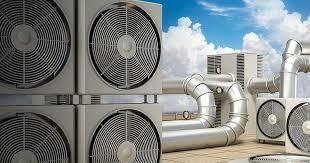Complete Guide to HVAC System Installation for Homeowners

For homeowners seeking comfort, efficiency, and long-term savings, investing in a reliable HVAC system installation is a smart decision. Heating, ventilation, and air conditioning (HVAC) systems are vital for maintaining indoor air quality and temperature control in every season. But proper installation is more than plugging in a unit—it requires expert planning, sizing, and integration with your home’s infrastructure.
Whether you're upgrading an outdated unit or installing a system in a newly built home, understanding the key steps and best practices in HVAC installation can help you make informed choices, avoid costly mistakes, and ensure your home stays comfortable year-round.
Why HVAC System Installation Matters
Living in Belton, TX, homeowners experience both intense summer heat and chilly winter nights. This makes having an efficient and properly installed HVAC system not just a luxury, but a necessity. Local climate, building codes, and energy regulations all play a role in how an HVAC system performs—and whether it meets legal and comfort standards.
A professional who understands HVAC system installation in the Belton area will take into account local energy guidelines, insulation requirements, and seasonal weather patterns to design a solution tailored to your needs. They’ll also be able to recommend energy-efficient options that qualify for local or federal rebates, saving you money both upfront and in the long run.
Key Steps in the HVAC Installation Process
When handled correctly, HVAC installation involves a structured process to ensure system performance and longevity. Here are the major steps professionals follow:
1. Home Evaluation & Load Calculation
Every home is unique, and a good installer will begin with a thorough evaluation. This includes square footage, number of rooms, window orientation, and insulation levels. A Manual J load calculation is typically used to determine how much heating and cooling your home requires.
2. System Selection
Based on your evaluation, the installer will help you choose the right HVAC system—from central air units to ductless mini-splits or heat pumps. Energy efficiency ratings (SEER, AFUE) are critical here, as they affect your utility bills and system performance.
3. Ductwork Design & HVAC System Integration
If your home already has ductwork, the installer will assess its condition. Leaky or outdated ducts may need sealing or replacement. For new homes or ductless systems, new designs must ensure proper HVAC system integration for optimal airflow and energy usage.
4. Installation & Setup
This is where the system components are installed, including air handlers, condensers, thermostats, and ductwork. Technicians will follow safety and building codes, secure permits, and test each component before final setup.
5. System Testing & Optimization
Before the job is finished, the installer will run a full system check—measuring air pressure, refrigerant levels, and thermostat accuracy. Fine-tuning ensures everything operates efficiently and safely.
The Role of HVAC Consulting
In larger or custom home projects, or for homeowners looking to make energy-efficient upgrades, consulting with an HVAC expert can provide additional value. Consultants can evaluate existing systems, suggest eco-friendly alternatives, help plan HVAC system integration, and oversee installations for quality assurance.
Experienced firms like Delta U Consulting offer expert insight into HVAC design, system sizing, energy modeling, and project management—ensuring your installation is efficient, compliant, and future-ready.
Conclusion
A successful HVAC system installation does more than regulate temperature—it improves indoor air quality, reduces energy costs, and increases your home’s value. In climate-sensitive areas like Belton, TX, working with knowledgeable professionals ensures your system can handle extreme conditions efficiently and reliably. Don’t treat HVAC installation as a DIY task or a simple upgrade—it’s a long-term investment that deserves expertise, precision, and planning.
Frequently Asked Questions
1. How long does HVAC system installation take?
Typically, residential installations take 1–3 days, depending on system complexity and whether ductwork is involved.
2. How often should HVAC systems be replaced?
On average, HVAC systems last 10–15 years. Regular maintenance can extend that lifespan, but efficiency may drop over time.
3. What’s the cost of HVAC installation in Belton, TX?
Prices vary by system type, home size, and installation needs, but average residential costs range from $5,000 to $12,000.
4. Can I install an HVAC system myself?
HVAC installation requires technical expertise and code compliance. DIY attempts can void warranties and lead to safety hazards.
5. What’s the benefit of HVAC system integration?
Integrating your HVAC with smart thermostats or energy management systems boosts efficiency and allows remote control and monitoring.
- Information Technology
- Office Equipment and Supplies
- Cars and Trucks
- Persons
- Books and Authors
- Tutorials
- Art
- Causes
- Crafts
- Dance
- Drinks
- Film
- Fitness
- Food
- Oyunlar
- Gardening
- Health
- Home
- Literature
- Music
- Networking
- Other
- Party
- Religion
- Shopping
- Sports
- Theater
- Wellness



